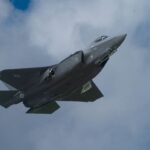
The Biden administration’s fiscal year 2023 budget request calls for a $773 billion Pentagon topline, a four percent increase over the current spending level, as the department plans its largest ever investment in technology development and procurement efforts to modernize for future strategic competition. The total defense spending figure in the president’s budget request is $813.3 billion, when also factoring in $29.7 billion for atomic energy defense activities and $10.6 billion for defense-related activities, and arrives as the administration briefed…

 By
By 











